Submitted by Flora Jing Lin Ng
Exclusive Interview with Zhang Lei from AZL architects: 'Architecture is about time'
China Architecture News - Aug 22, 2021 - 09:28 3372 views
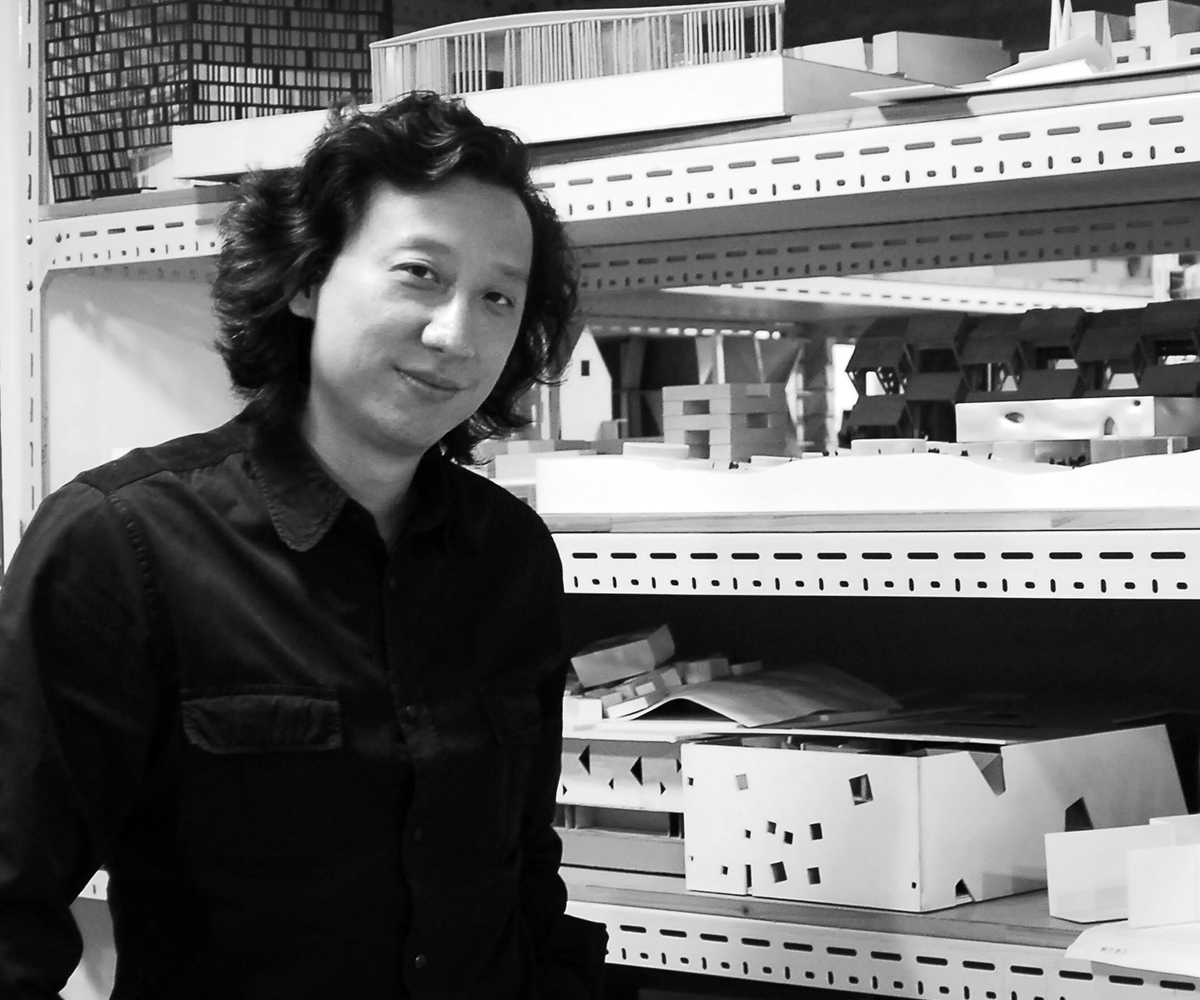
Within the last few decades, China has seen tremendous growth and change in the architecture industry. Through this series of interviews with architects in China, WAC’s China Country Reporter Flora Jing Lin Ng desires to bring exemplary contemporary Chinese architecture under global spotlight, with a focus on investigating the incorporation of Chinese culture and buildings that are sensitive to their context.
World Architecture Community has invited founder and architect Zhang Lei from Nanjing based architecture firm AZL Architects to discuss the practice’s philosophy and work.
Since 2009, the practice has been completing a wide range of projects under Zhang Lei’s lead; ranging from architecture, interior to landscape design. The practice believes that through understanding the relationship of architecture and time, it can answer our needs for sustainable development in the modern era. Zhang Lei’s work shows strength and persistence in craftsmanship through architecture, and has won acclaim among the contemporary Chinese architectural field as well as internationally.
Other than practicing as an architect, Zhang Lei is a professor in School of Architecture & Urban Planning in Nanjing University. He has been invited as guest professor in Hong Kong University, Chinese University of Hong Kong, Chiba Institute of Technology in Tokyo, and as design critic in the GSD Harvard.
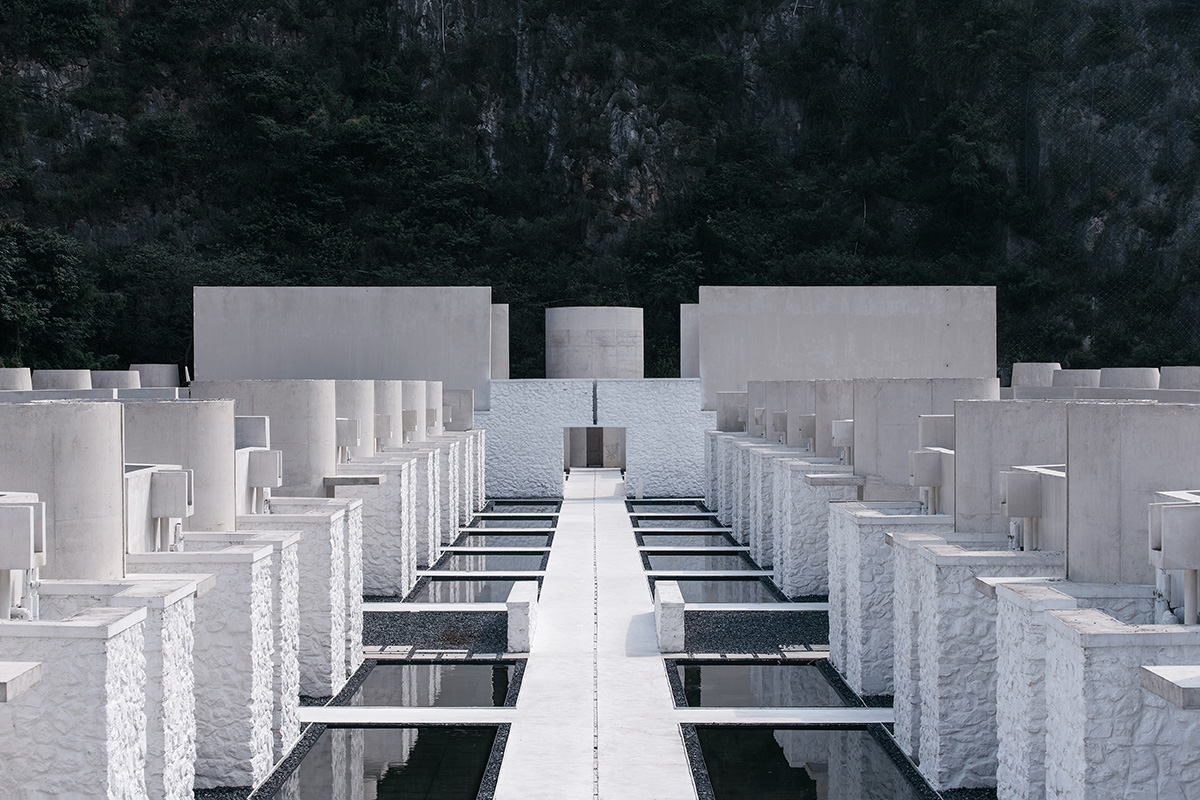
Ruralation Museum Hotel-Main Axis. Image © Wen Studio
Flora Jing Lin Ng: Some of your best known works are: Slit House, Brick House, Nanjing Wanjing Garden Chapel, and the Renovation of BingDing Wood Kiln Factory, just to name a few. Is there a common theme or ideology that is embedded in AZL’s designs?
Zhang Lei: The "basic architecture" we advocate looks into the relationship between people and architecture, which is a natural, unadorned and harmonious relationship. We aim to creatively satisfy people’s needs for space, and also try to coincidence and stimulate the vitality of the site or place, where an architecture sits on. “Basic architecture” adheres to and develops the simple design principles of "less is more", from rationally selecting material and construction method, unifying the form and content, to developing the overall relationship for “human, architecture and nature".
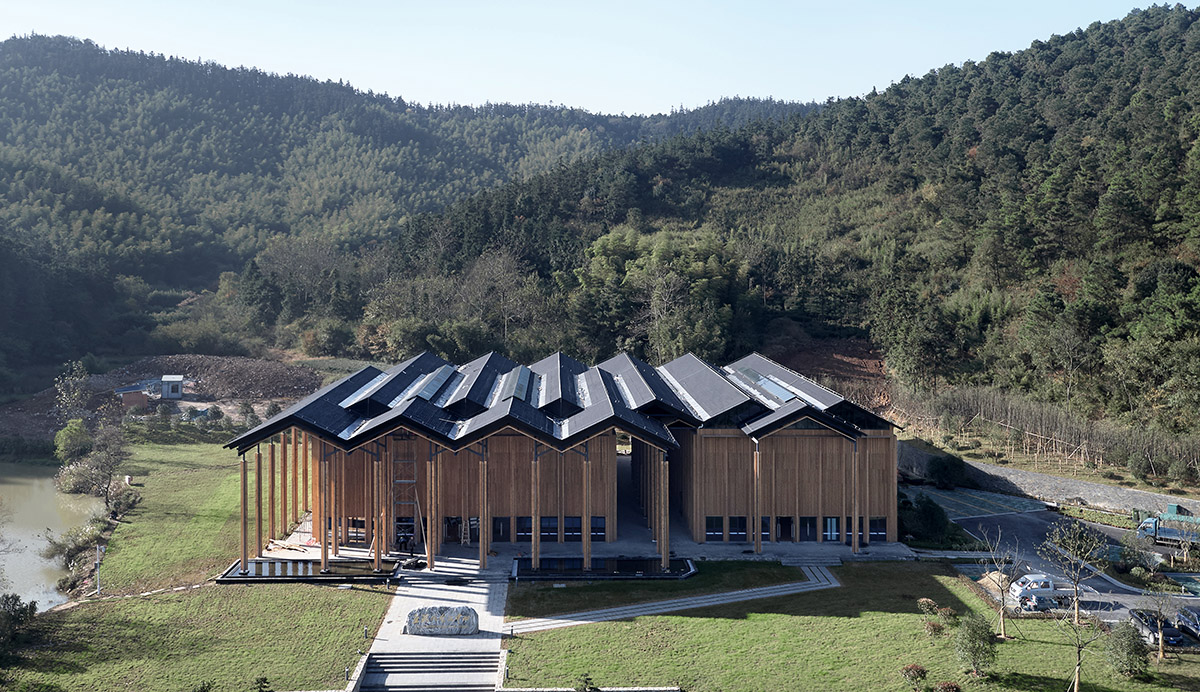
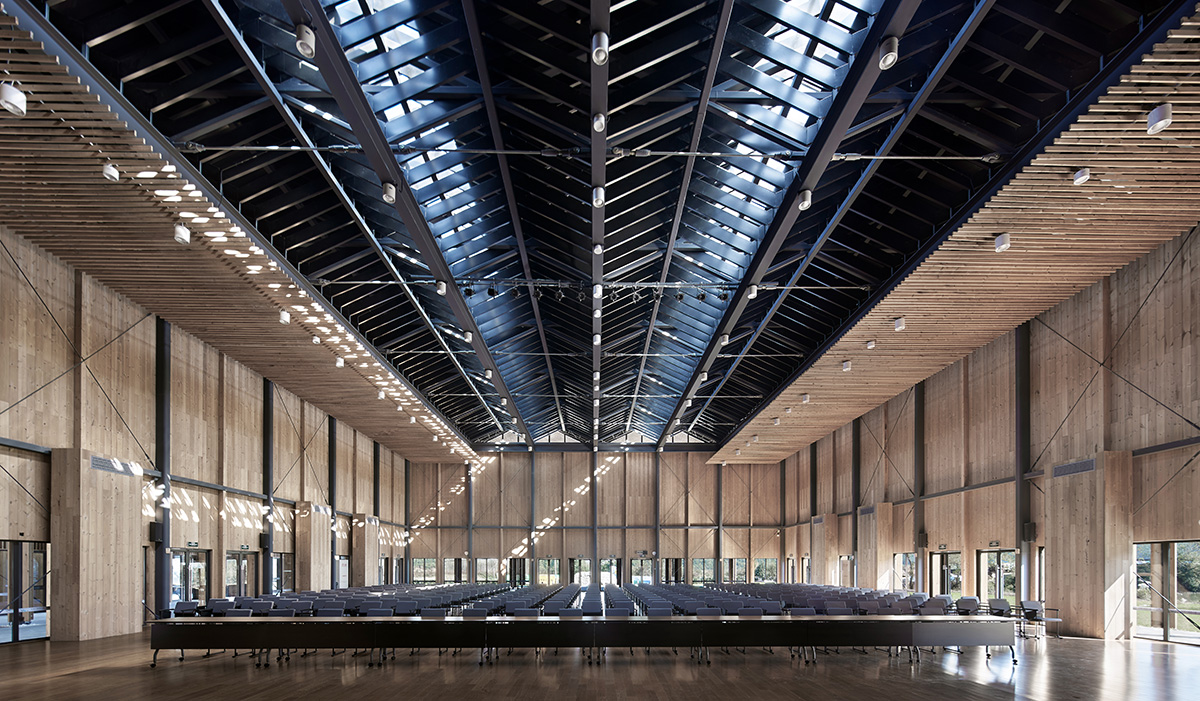 Shitang Internet Conference Center. Images © Hou Bowen
Shitang Internet Conference Center. Images © Hou Bowen
Flora Jing Lin Ng: You are from Nanjing, China, and you studied at Southeast University in Nanjing before going overseas to ETH- Zurich to pursue your postgraduate studies. How did your up-bringing, education and early interaction with architecture affect your thinking and your vision for the future?
Zhang Lei: The training in Southeast University emphasized a lot on plane rationalism, requiring the rationality from structure, function to streamline. In the 1980s, this was a very solid set of teaching methods. I admire the working status just as a watchmaker, even as a devouring and persistent monk. I have benefited a lot from the plane rationalism training in Southeast University and the professional spirit as a Swiss watchmaker.
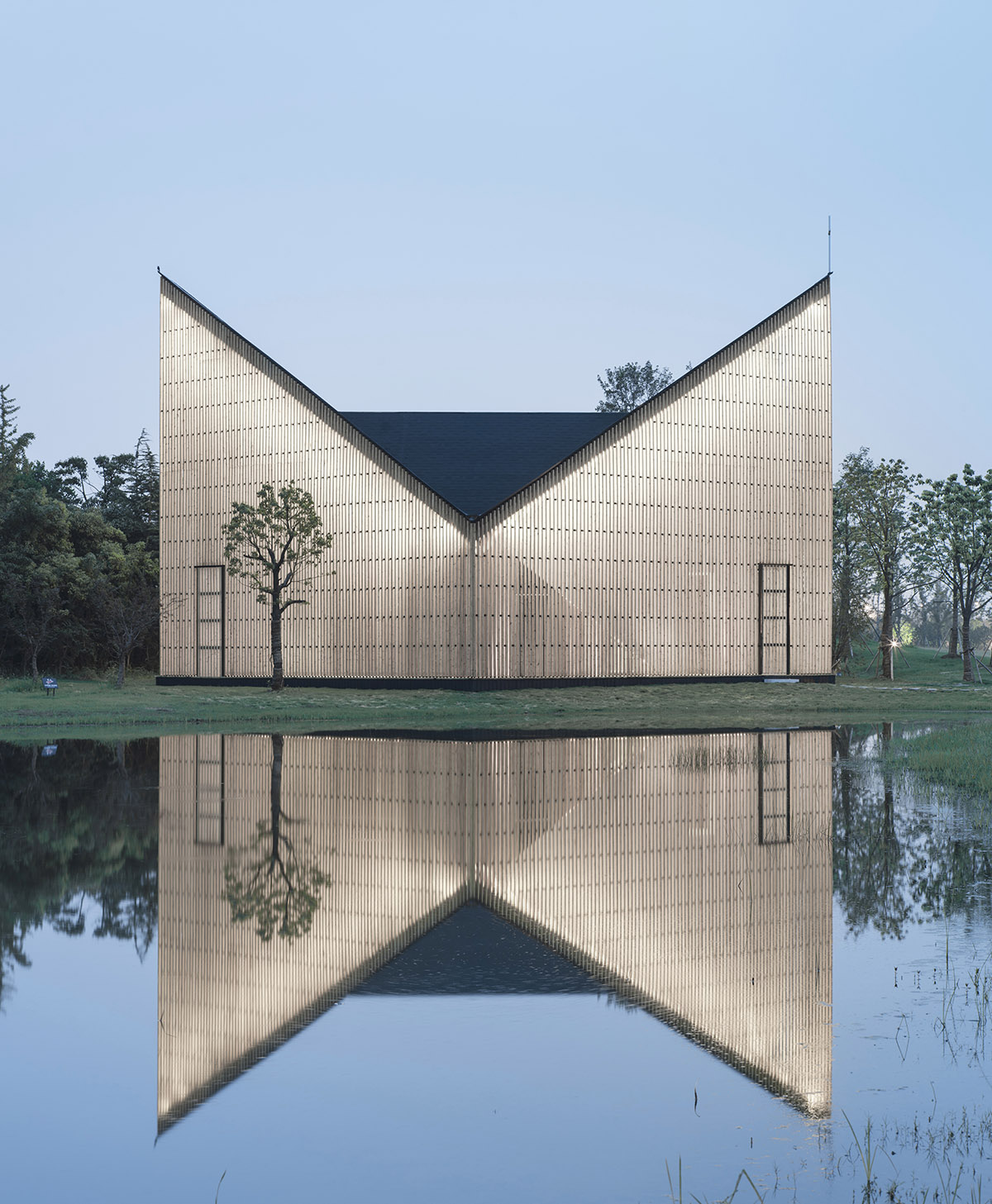
Nanjing Wanjing Garden Chapel. Image © Li Yao
Flora Jing Lin Ng: Back in the early 2000s, you could have worked for other architecture and design studios. Why did you decide to set up your own practice officially in 2009 and how did you find your footing and get projects?
Zhang Lei: In 2009, I resigned from the positions as the Design Institute director and the associate dean of the university’s architecture college. As a practitioner in the architecture field, I hope to take on more responsibilities and challenges. The relationship between research, teaching and practice used to be equal, but I would like to devote more time to practice in my own name. Taking on challenges and risks alone is something I'm willing to try.
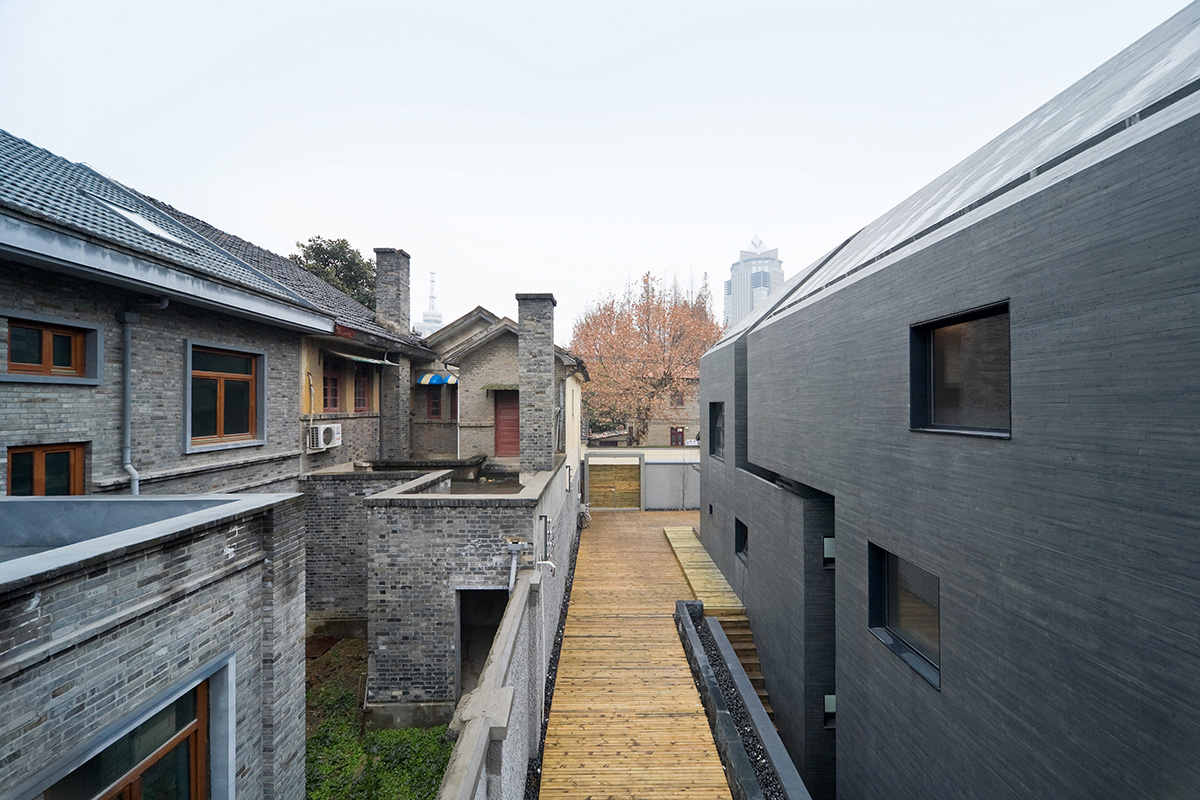
Concrete Slit House. Image © Iwan Baan
Flora Jing Lin Ng: Can you talk about why your practice places an emphasis on sustainable development, culture and tradition? What do they mean to you?
Zhang Lei: The issues architects concern about today are actually discussed around the world, for instance, the sustainability between human and nature. The challenge Chinese architects are facing today is all about time, how to wisely use and protect the idea of time in rapid development. Culture is not only about knowledge, or just be used as labels. The differences of cultural traditions and regional characteristics are the differences of the time, the daily sunshine and lifestyles. An architectural context is talking about time, about connecting the past and the future. The civilization plays even a more important role than the culture or the context. The civilization is recorded through the physical environment, and a good architecture is constantly reshaping the boundaries for a civilization.
Flora Jing Lin Ng: It is an honor to help preserve 2000 year old traditional craft, such as the kiln in BinDing Wood Kiln in the world’s ‘Porcelain Capital’, Jingdezhen. Could you tell us a story about the project? How do you use architecture to introduce people to this craft that is fighting for its survival against modern technology?
Zhang Lei: Jingdezhen wood kiln is named after the locals’ preference of using the Chinese “Horsetail” red pine wood as a form of fuel. Like any traditional craftsmanship that has survived over more than one millennium’s history, it is suffering from the impact of modern technology and new ways of firing. Due to the difficulty in controlling the wood consumption and the firing effects, the development of wood kiln is hindered. In recent years, with the widespread adoption of coal and natural gas fuels in the newer industrial technologies, as well as the impact of environmental protection requirements, wood kiln is facing a threat of extinction.

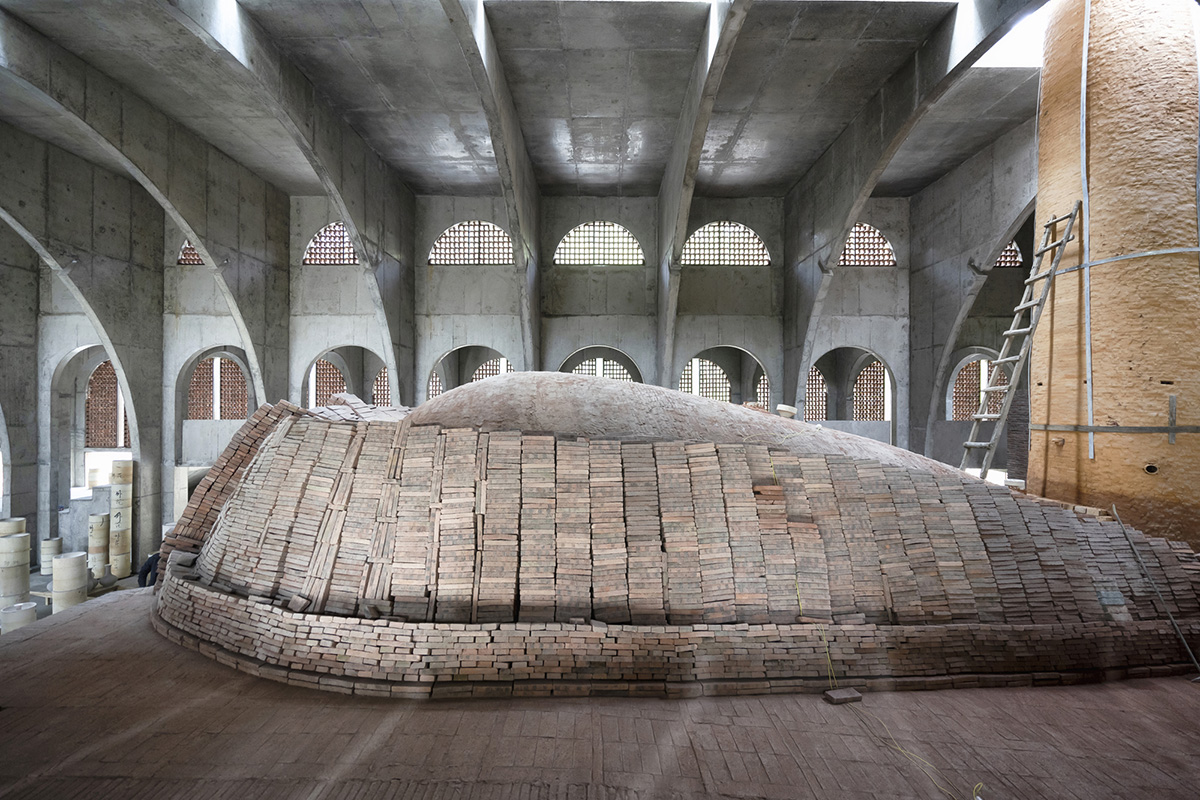
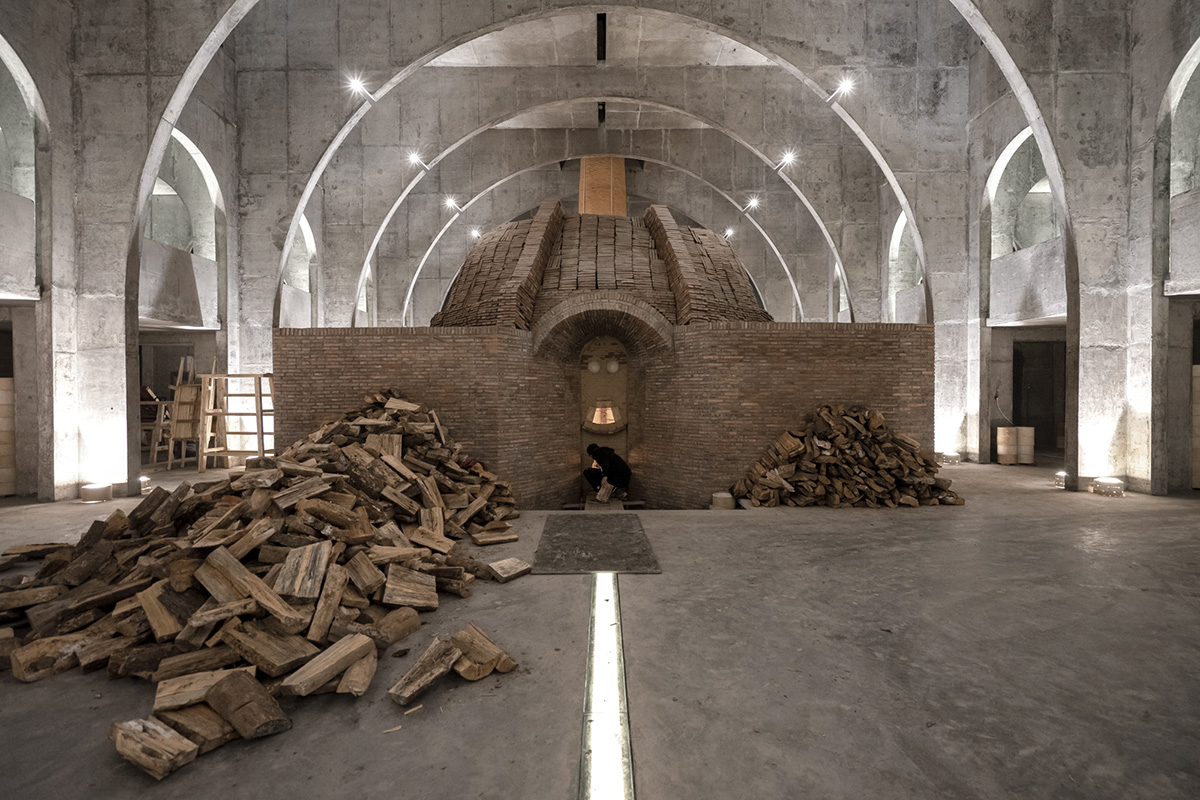
BingDing Wood Kiln Factory. Images © Dong Suhong
Zhang Lei: At present, the construction technology for Jingdezhen egg-shaped wood kiln is only inherited by the 70-years-old Mr. Yu Hezhu and his three or four apprentices. As a practitioner zealously interested in revitalizing the traditional kiln, the project owner, Mr. Yu, began to learn from the 83-year-old master, Yu Xunquan in 2012 for kiln calcining, and then studied under the local’s only successor of the wood kiln technique, Yu Hezhu, to learn the kiln building technique in 2014.The construction of the complex double-curved brick arch masonry for the egg-shaped wood kiln can only be based on experience, neither there are any blueprints for reference during the entire construction process, nor is there any written documents existing so far.
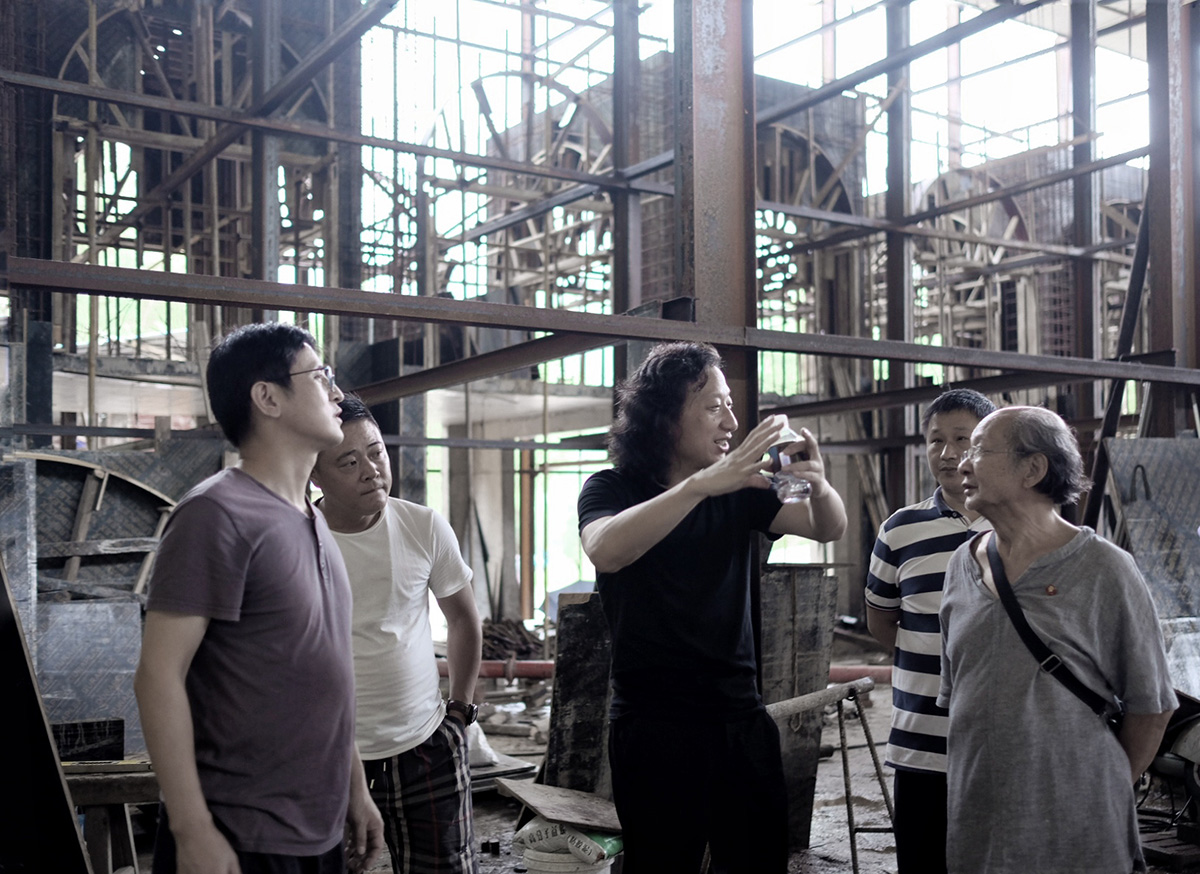
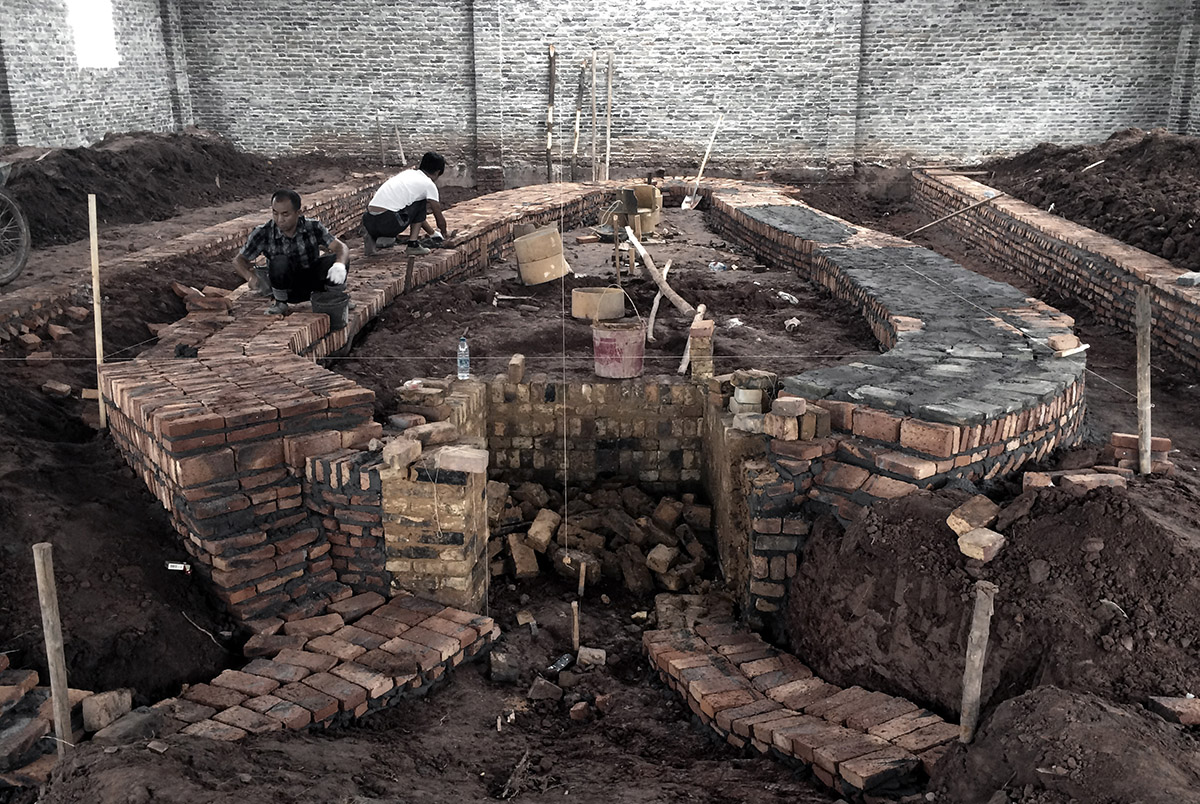
Process of BingDing Wood Kiln Factory. Images © AZL Architects
Zhang Lei: BingDing Wood kiln consists of the kiln building and the kiln. The design revolves around the kiln as the core, coupled with the configuration of the streamlined and parallel production axis and observation axis. The kiln building adopts a concrete arch similar to the kiln’s brick arch structure, and stresses the axial symmetry of the east and the west of the kiln. The top light belts, the wall windows, and the floor vertical joints of the kiln building are all directed to the central axis of the kiln.
There will be many visitors entering and participating in the entire porcelain firing process. The observation axis on the second floor is centered toward the kiln and is encircling the building, so that the vivid spatial relationship between buildings and kiln can be perceived from different angles, highlighting the core position of the kiln. The BingDing Wood kiln is a ceremonial space, where the kiln workers have a sense of pride in their work, and also where a strong sense of awe towards both the traditional crafting technique and the unremitting spirit of craftsmanship can be felt unanimously by the visitors. In addition to the fair-faced concrete, the main material of BingDing Wood kiln is only the kiln bricks for the kiln. The arched window holes above the second floor of the building project form patterns of light and shadows with the lattice inlaid by kiln bricks.
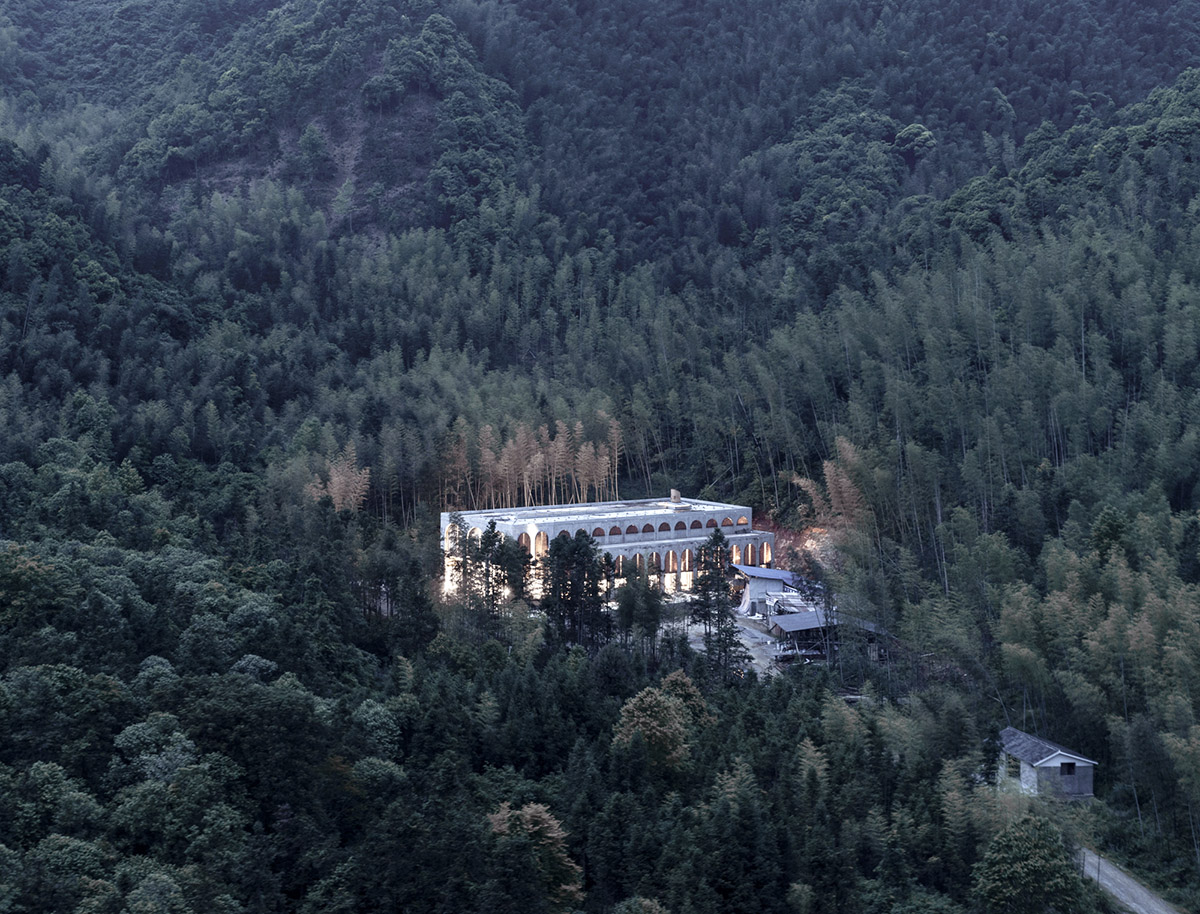
BingDing Wood Kiln Factory. Image © Li Yao
Zhang Lei: In the beautiful and tranquil hilly village of Qiancheng, Mr. Yu and his wife as well as the local government hope to bring more attention to the Jingdezhen ceramic industry and new opportunities for rural craftsmanship inheritance and economic development, along with the revival of the wood kiln. In Chinese culture, porcelain has never only served as a necessity for daily life, but also an important container for the sentiments in life.
Flora Jing Lin Ng: China is a country with a rich history and has thousands of years of tradition. Can you talk about the biggest change you experienced in Nanjing and China in the past decade, and what are some of the rewards and challenges that you have experienced?
Zhang Lei: The challenge is all about time, how to make good use of time in today’s rapid development, and how to protect time. My understanding of architecture is about time: the light that changes with time, the time trace that material texture leaves, the unity that content and form realized in time, and the nature that grows continuously in time. The essence of architecture is that time is constantly perceived by new needs.
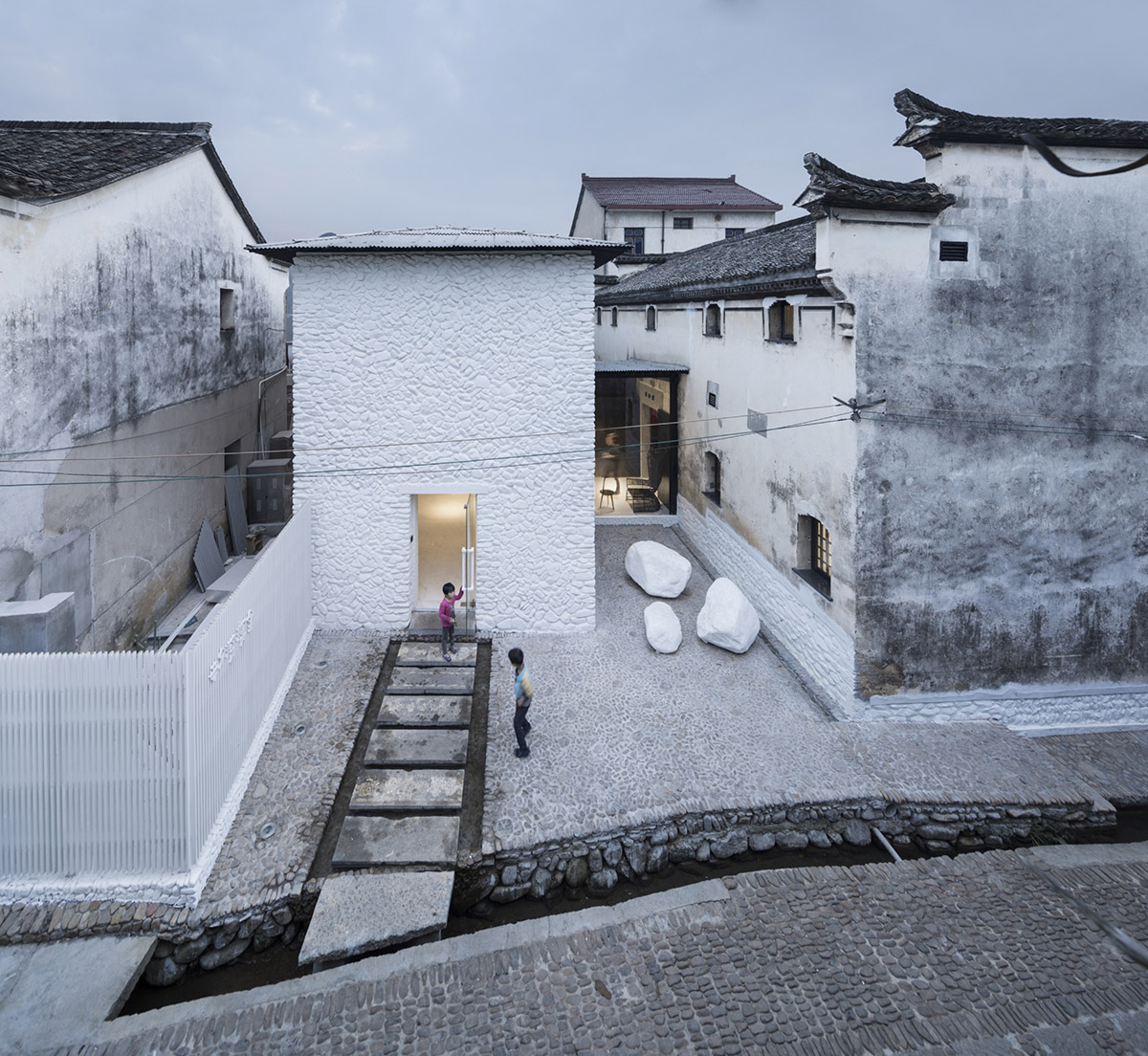
Ruralation Shenaoli Library. Image © Li Yao
Flora Jing Lin Ng: You are a professor at the school of Architecture & Urban Planning in Nanjing University. Could you tell us a bit about your teaching philosophy?
Zhang Lei: Since twenty years ago, I started to teach "Basic Architecture" in my graduate class at Nanjing University. Every year, I will talk about "learning from architecture without architects", learning about the authentic, reasonable and extreme construction of architecture which are built without architects, and the sustainable craftsman spirit.
Flora Jing Lin Ng: What do you like to do in your personal time? Aside from architecture, how would you express yourself? Please share with us.
Zhang Lei: I don't have any hobbies. I just try to do my daily work well, deal with the design problems I encounter every day, and leave time for tomorrow to solve new problems.
Flora Jing Lin Ng: What do you think about the new generation of architects in China? What advice would you give to younger architects and designers?
Zhang Lei: The new generation of architects are smarter and also care more about individual feelings, and may be more susceptible to trends and want to live as they please. Architecture is something that deserve to be learned throughout our lifetime.

Sketch of the Avant-Garde Ruralation Library. Image © AZL Architects
Top Image © AZL Architects
